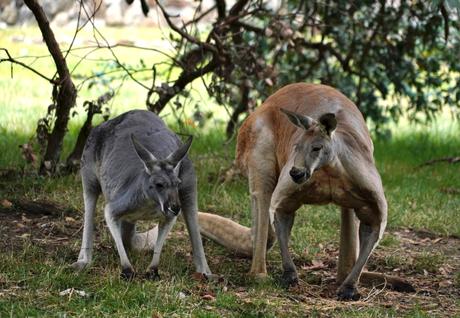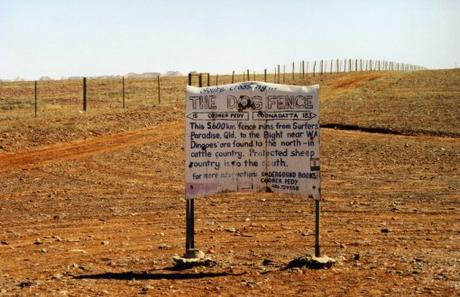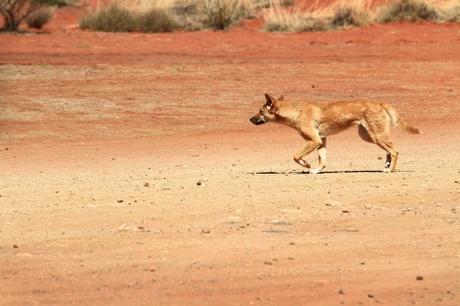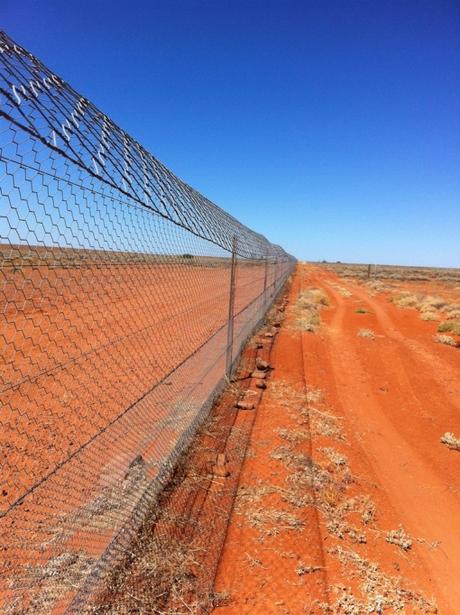We’ve just published a new paper showing that young red kangaroos (Osphranter rufus) protected by the dingo-proof fence take more time to grow up than their counterparts on the other side, who quickly outgrow the risk of being a dingo’s next meal.
 © M.S.Y. Lee
© M.S.Y. Lee
Our Flinders University/ARC Centre of Excellence for Australian Biodiversity and Heritage study shows that protected red kangaroos south of the dingo fence have a slower growth rate than those living north of the fence, where they are exposed to the dingo.
Published in the Journal of Mammalogy, our article led by Rex Mitchell also revealed that there are more young and female kangaroos inside the dingo-proof fence, showing that the fence impacts on different aspects of the red kangaroo’s life cycle.
Red kangaroos are one of the dingo’s favorite prey species, so it’s not surprising to find fewer of the smaller females and younger animals when there are more dingoes around. However, we didn’t expect that young animals inside the fence were lighter and smaller than those outside the fence.

Rex Mitchell, who collected and analysed the data from a licensed scientific shooting programme, says that the faster growth rate of red kangaroos outside of the fence and more vulnerable to predation could be a defensive adaptation for survival against dingoes preferring smaller red kangaroos. In so doing, dingo-exposed kangaroos appear to escape the dangerous weight range more quickly than their protected cousins inside the fence.
We also used satellite-based analyses to evaluate the impact of vegetation cover on these striking differences to ensure the difference in growth rate was not simply related to higher food availability outside the fence, but the results were also surprising. Counter-intuitively, we found less vegetation inside than outside the fence in the year of sampling. There might, in fact, have been more food available to the slower-growing kangaroos inside the fence, meaning they were really taking their time to grow up.

Slower growth inside the fence could have some advantages for the animals. Having to put more of the body’s resources into growth, particularly when food is scarce, can mean that other areas of the body are compromised — an animal might be in poorer health or have fewer offspring, for example.
It’s also surprising that the dingo-proof fence could affect kangaroo growth patterns during the relatively short time of its existence. In the area we investigated, the dingo-proof fence was in disrepair until nearly 50 years ago, or about 17 kangaroo generations. Changes in a population’s growth patterns usually take much longer to evolve.
But we still need to know if this pattern is repeated over more years, and whether it is heritable or just a short-term reaction to exposure to dingoes. We also need to fine-tune our understanding of the vegetation, because vegetation cover might not mean that all the vegetation could be eaten by kangaroos.

The fence is a unique Australian megastructure, and a huge predator-prey experiment. Examining how the fence modifies our native wildlife is important in the continuing debate over the efficiency and merits of the dingo-proof fence, not only relative to the dingo itself, but also to the invasive species such as rabbits that dingoes eat.

